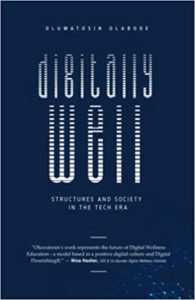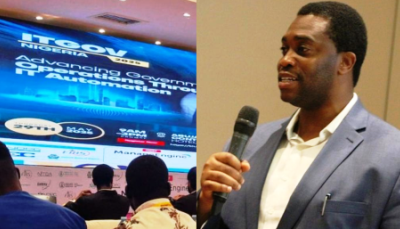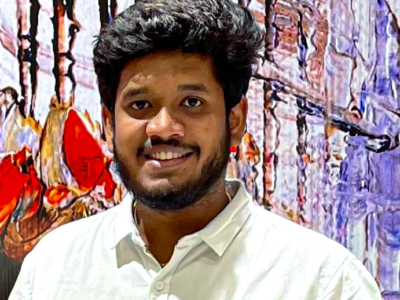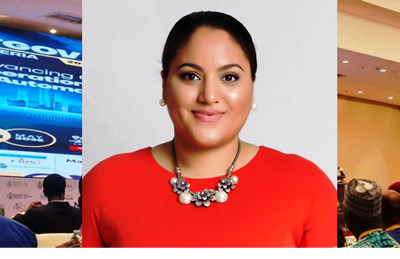Regardless of the fast paced nature of our world today, there is a dire need for individuals to remain productive while engaging in deep meaningful work. In line with this need, IT Edge News, Tracy Yekaghe spoke with Oluwatosin Olabode, Executive Director, Doing Healthy Africa. Author of eight books including the recently published ‘Digitally Well: Structures and Society in the Tech Era’, Olabode, Africa’s first certified digital wellness educator, is two-time TEDx and international speaker.
What might have ignited your passion for building your expertise around digital wellness?
My passion for digital wellness is rooted in the work we did with my mental health non-profit, Strengthening Society Today Foundation, which provides interventions specifically in the areas of suicide prevention among young people. Over the years of working with these young people, it became clearer how much technology and social media, for instance, were impacting their overall well-being (this was more negative than it was positive). Realizing that the use of technology can either impact us positively or negatively is what began my journey into the digital wellness world. As I tell my clients, for every FOMO (Fear Of Missing Out), there is a JOMO (Joy of Missing Out). This will make more sense when you understand digital wellness.
As I started to research and explore the topic of digital wellness, I became fascinated by the intersection between technology and human behavior, and the role our identity plays in how we create and use technology, so that I can help individuals and organizations navigate the challenges of our digital world and find ways to use technology in a way that supports their overall well-being and productivity goals. Seeing the positive impact that my work has had on others has only fueled my passion and motivation to continue building my expertise around digital wellness, which led me to become the first Certified Digital Wellness Educator in Africa and an Ambassador for Digital Wellness Day.

How would you define digital wellness from your perspective and what are the essential skills required for those desiring to thrive in this digital era?
Digital wellness overviews how we are able to build balance between our offline and online lives in such a way that our use of technology and their overall physical, emotional and social well-being are not negatively impacted. It refers to the healthy state of well-being that individuals experience in their relationship with technology and digital devices. To thrive in this digital era, individuals need to develop essential skills, including but not limited to:
- Self-awareness and understanding your why: By understanding why you use technology and being self-aware of your role therein, you can align your digital behaviors with your intentions, values, priorities, goals and objectives of being in the digital space.
- Setting boundaries and having a communication charter: Setting boundaries around your technology use can be as simple as knowing when to turn notifications on or off. For instance, you can choose to turn off notifications during family time or when you’re working on an important task. Additionally, having a communication charter can help you manage others’ expectations about when and how they can reach you. For example, you may choose to communicate your working hours so people do not reach out to you outside of it.
- Practicing mindfulness and savoring moments: Mindfulness can help you stay present and engaged in the moment, both online and offline. For example, if you go out on a date with your significant other, you can choose to put your phone away and focus on enjoying the moment. Being aware of each moment helps us to manage internal and external triggers that can cause distractions. The more present we are in what we are doing, the more traction we can build.
- Building social connectedness: Social connectedness is important for digital wellness because our social interactions and relationships have a profound impact on our overall well-being (these are our support structures). In today’s digital age, it’s easy to get caught up in the online world and spend less time connecting with people in real life. However, it’s important to strike a balance between online and offline connections. For example, you can schedule regular in-person meetings with friends or family members to stay connected and build strong relationships. Our online lives must never replace our offline lives.
By developing these essential skills, individuals can become digitally well and thrive in today’s digital era.
“It’s difficult to make specific predictions about the future of digital wellness, but I am certain that it has come to stay. We are now witnessing an integration of the online and offline worlds as there is hardly anything we want to do that does not require some form of technology.”
Could you elaborate more on what humane digital habits are and how it can translate to digital flourishing on a global scale?
First of all, we need to understand what digital flourishing® is to better appreciate why humane habits matter in our dispensation. Digital flourishing® according to the Digital Wellness Institute is a mindful approach to digital technology usage that supports our thriving in various areas of life. This approach empowers us to take advantage of the benefits of technology while avoiding associated harms. Humane digital habits are how we take advantage of the benefits of technology. They are intentional and mindful practices that prioritize well-being and productivity.
“My digital wellness platforms have helped individuals to develop a more balanced and mindful approach to technology use, resulting in improved well-being, productivity, and relationships.”
Some of these habits are what I shared in responding to the previous questions, such as setting boundaries around technology use, scheduling activities, being intentional and paying attention, and using technology to enhance our lives rather than detract from them. The more we prioritize humane digital habits, the more we and the people around us (scaling globally) can achieve digital flourishing® because we are creating digital environments that are conducive and safe spaces rather than toxic and negative. Imagine a world where people consciously do their part in creating an ecosystem that allows us to thrive and protect our well-being.
In my book, “Digitally Well: Structures and Society in the Tech Era,“ I discuss the role government has to play in setting up and implementing policies and regulations that ensure the creation of humane tech products, the role of responsible and ethical tech creators, and the role we ourselves play in the use of technology and our digital time. The adoption of humane digital habits on a global scale requires a collective effort and a commitment to creating digital environments that prioritize well-being and flourishing at all levels.
Could you share with us some of the ways through which your digital wellness platforms have impacted beneficiaries?
Absolutely! As a digital wellness educator, I have had the privilege of working with individuals from all walks of life, helping them to develop the skills and strategies they need to thrive in a digital world. For example, one of my clients, Tosin (not her real name), had been struggling with digital overload and was finding it difficult to focus on her work. Through my digital wellness program, she learned how to schedule and timebox her activities, which allowed her to reduce multitasking, distraction and overload. As a result, Tosin was able to regain control over her devices and improve her productivity and well-being.
“[Digital wellness] refers to the healthy state of well-being that individuals experience in their relationship with technology and digital devices.”
Last year, I was honored to speak on a highly sought-after panel for Digital Wellness Day, which reached over 7 million people in 36 countries. Opportunities like this have given me a platform to help people improve their digital habits and begin their journey to living digitally well. This is especially important because the concept of digital wellness is still relatively new in this part of the world.
My digital wellness platforms have helped individuals to develop a more balanced and mindful approach to technology use, resulting in improved well-being, productivity, and relationships. For instance, many clients have learned the importance of intentional and attention management and are implementing strategies like feeds management as they curate their social media pages. I have also received positive feedback and testimonials from my newest book, which includes a workbook to help individuals not only understand what to do, but how to do it.
Do you have future projections as far as the subject matter of digital wellness is concerned? Feel free to share.
Well, it’s difficult to make specific predictions about the future of digital wellness, but I am certain that it has come to stay. We are now witnessing an integration of the online and offline worlds as there is hardly anything we want to do that does not require some form of technology. For this reason, digital wellness will continue to be an important topic in the years to come, as technology becomes even more integrated into our daily lives, and people want to ensure that they are using it in a way that promotes their optimal health.
Digital wellness is a critical topic… and as organizations and individuals try to create work-life balance, the need for developing healthy habits, tools and practices around technology use will only become ever more clear as people and organizations aim to support their well-being or that of their employees.





























